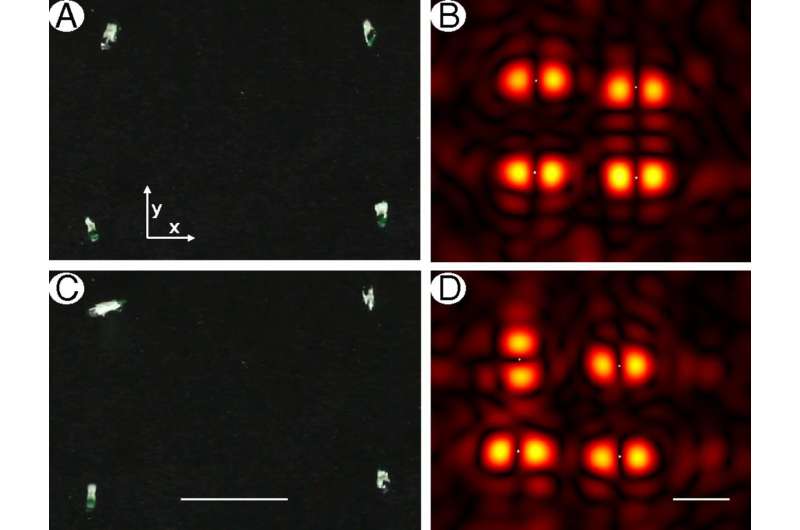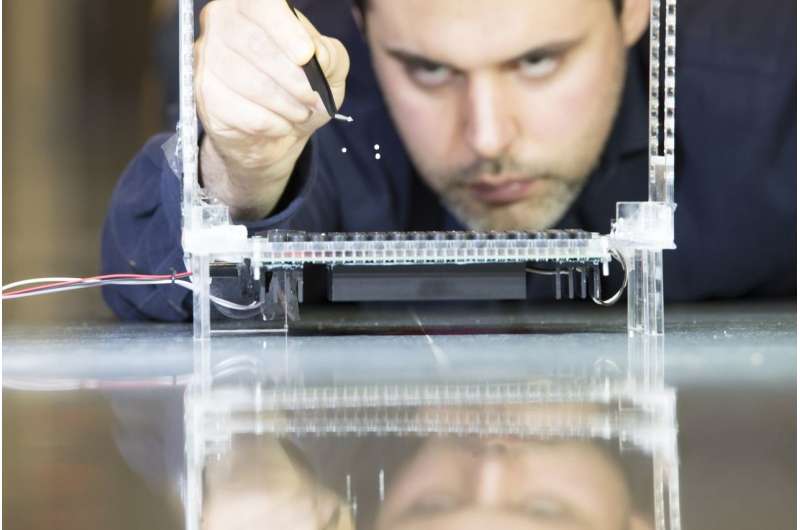December 18, 2018 report
Holographic acoustic tweezers able to manipulate multiple objects in 3-D space

A pair of researchers, one with the Public University of Navarre, the other with the University of Bristol, has developed a system of holographic acoustic tweezers that can be used to manipulate multiple objects simultaneously in 3-D space. Asier Marzo and Bruce Drinkwater describe their tweezers and possible uses for them in their paper published in the Proceedings of the National Academy of Sciences.
Holographic laser tweezers are familiar to researchers, but they can only be used to move around micro-scale objects. In this new effort, Marzo and Drinkwater take the idea of holographic tweezers into the realm of sound and in so doing have created a system capable of manipulating a host of larger objects simultaneously.
The system they built consists of two arrays of very small speakers (256 of them, each of which was just one centimeter in diameter) placed on walls opposite one another—each array is connected to a computer that controls the sound emitted from each speaker independently. In between the speaker arrays, set at ground level, is a reflective surface. The system works by placing tiny objects on the ground surface; they are lifted into the air by sound waves in the 40-kilohertz range—far above what humans can hear. By controlling the sound emitted from the speakers using a computer, the researchers can manipulate multiple objects in the air over the base. In their experiments, they manipulated Styrofoam balls ranging in size from one to three millimeters in diameter.
In the demonstrations, the researchers configured the balls into 3-D arrangements in which they danced in unison and moved as a single entity. The researchers also hooked other objects to the balls and used the balls to move them around. One example involved creating a circular object and then passing a string through it.
The researchers suggest a system like theirs could be used carry out medical procedures inside the body without the need for surgery. They further suggest it could be used to construct objects using a hands-off approach or even as the basis of a 3-D display system.

More information: Asier Marzo et al. Holographic acoustic tweezers, Proceedings of the National Academy of Sciences (2018). DOI: 10.1073/pnas.1813047115
Journal information: Proceedings of the National Academy of Sciences
© 2018 Science X Network





















